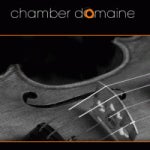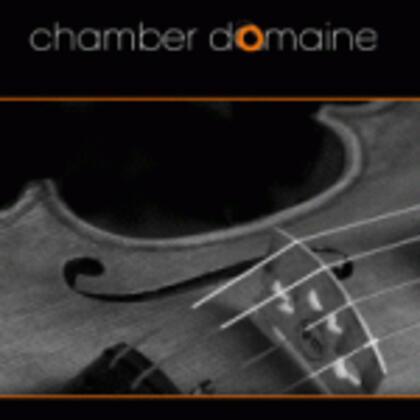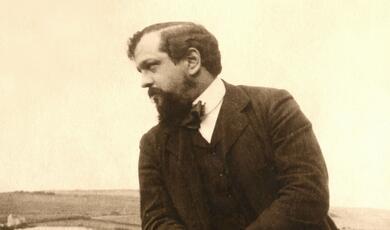Mahler, The Prodigy and Hollywood
Share
- Details
- Transcript
- Audio
- Downloads
- Extra Reading
Both Mahler and Strauss proclaimed the thirteen year old Korngold a genius. This lecture will explore how Mahler influenced a generation of émigrés who wrote for films. Concert: Korngold, Cello Concereto, Op.37; Mahler, Urlicht, Korngold, Piano Trio, Op.1.
Download Transcript
Mahler, the Prodigy and Hollywood
Thomas Kemp
Thursday 7 April 2011
There is a telling anecdote that André Previn told regarding the composer, Erich Wolfgang Korngold. An American critic described his music as being “more corn than gold.” Previn pointed out that know one could remember whom the critic was but Korngold would always be remembered. Millions of people would have heard Korngold’s music in the cinema without realizing that the composer was one of the most feted musicians of the early decades of the 20th century. Indeed, in 1921, with a string of startling works behind him, Korngold was described by Giacomo Puccini in an article in the Neue Freie Presse: “With regards to modern German music, my biggest hope lies with Erich Wolfgang Korngold. He is exceptionally talented, has a formidable technical knowledge and, most of all, superb musical ideas…he has so much talent that he could give half of it away and still have enough left for himself.” [1]
Jean Sibelius described Korngold as “a young eagle.” [2]
Perhaps the most remarkable achievements of these years are the early works Korngold wrote before he was even a teenager, a selection of which were printed privately under the supervision of his father, the eminent critic Julius Korngold.[3] These were sent to 40 musicians and experts for appraisal and included his Piano Sonata No.1, Don Quixote: Six Characteristic Pieces and the two-act ballet pantomime, Der Schneemann.
These compositions astonished. Richard Strauss commented: “Today I received your son’s compositions and have read them with the greatest astonishment…This assurance of style, this mastery of form, this characteristic expressiveness in the sonata, this bold harmony are truly astonishing…I am looking forward to making the personal acquaintance of this arch musician.”[4]
In 1934, Max Reinhardt [5] – the famous German theatre director and Hollywood pioneer – persuaded Korngold, to work in Hollywood for the burgeoning film industry. Korngold relished the challenge and went on to win two Academy Awards for The Adventures of Robin Hood and Anthony Adverse. He was to be one of the defining musicians in the development of film music.
The temporary move to Hollywood was to become an exile: Korngold was Jewish (although non-practicing) and his music was banned by the Nazi’s as Entartete or degenerate music: his income from composing and conducting rapidly dried up as the Nazi’s began to occupy Europe. Also, with the annexation of Austria in 1938 all his property and possessions were confiscated, as were his lifesavings. He was to say that The Adventures of Robin Hood that he so marvelously scored in 1938 - a film starring Errol Flynn and with a huge budget of $2 million - had saved his life. Although feted in Hollywood and his music reaching an unprecedented worldwide audience through the mass media of cinema, by the time of his death in 1957, he was living in comfortable obscurity and for the next two decades, the bright hope of the early part of the 20th century was a footnote in musical history.
Born in 1897, in Brno, Erich Korngold spent his early years growing up in Vienna where his father had become one of the leading music critics of his day: taking over from the legendary critic Eduard Hanslick[6] at the Neue Freie Presse. Korngold showed incredible musical precocity. Recognition of his incredible gifts came when Erich’s father took him to play his cantata Gold[7] to Gustav Mahler at his apartment on Auenbruggergasse. Mahler was one of the greatest and most influential musicians of his day as Director of the Royal Opera in Vienna and an internationally celbrated conductor and composer. Julius Korngold described the meeting in his memoirs: a meeting that took place in June 1906 when Erich was nine years old. Performing the entire piece from memory, Mahler avidly read the score. “He began to pace hastily to and fro in the curious limping rhythm peculiar to him when he was excited. He kept exclaiming “A genius! A genius!” - in ever more strident tones. The melodic structure, formative power and revolutionary sense of harmony had strongly impressed him. “Send the boy to Zemlinsky,” he advised me with mounting urgency. “No conservatory! No drill! He will learn everything he needs to know from Zemlinsky during free give and take of creative instruction.”[8]
Alexander von Zemlinsky, [9] the teacher and mentor to Arnold Schoenberg, was an inspired choice for the young Korngold. Zemlinsky was unorthodox and unmethodical in the way he taught – the opposite of the rigid and dogmatic training that Mahler had had as a student at the Vienna Conservatory. Zemlinsky enabled Korngold to develop his own voice rather than restrict him with exercises or imposing his own style of music on him. Korngold was to later acknowledge Zemlinsky’s formative influence that showed him how to write music where one voice moves naturally and consistently, with a logical voice-leading structure thereby enabling the others to be free. Indeed this is something that Schoenberg learnt through his studies with Zemlinsky. Zemlinsky did not hold onto his protégés. Like Schoenberg, Korngold was only briefly a student.
Zemlinsky’s influence can be seen in the extraordinary development in the songs, Piano Sonata No.1 and the pantomime, Der Schneemann which was to cause an international sensation in 1910. The freedom this technique gives enables Korngold to push the limits of musical expression: to the edge of tonality with richly motivic scoring and complex, virtuosic part writing. This can be heard in the extraordinary Piano Trio Op.1, which was dedicated to his Father. This work would be remarkable for any composer but is even more remarkable for the fact that it was written by a twelve year old.
The structure of the work looks back to the 19th century – the Piano Trio is in Four Movements with a traditional scheme: sonata form first movement; Scherzo and Trio; Slow Movement and Finale. Echoing the concern for structural unity that is often found in the first Viennese school of Haydn, Beethoven and Mozart, material found in the first, second and third movements find its way into the finale in a variety of guises. The opening of the Finale has a skittish opening gambit that is a send up of the beautiful melody from the slow movement. There is a section Mit Humor, fast Walzertempo, which parodies the serene opening of the first movement as a Waltz with clumsy pizzicato interjections – salon music gone wrong. This is a classic Mahlerian twist, using parody to undermine serious musical material.
Even the last three emphatic chords of the work, ingeniously use the opening motif of the first movement as grace notes in the violin. There are many examples of this preoccupation with cyclical unity operating on many levels in this music – many are far subtler that the ones mentioned.
Whilst the music is steeped in the Austro-German tradition of Brahms, Mendelssohn, Schumann and the First Viennese school, the music is progressive and very much of its time: it is contemporary music that could be by Mahler, Schoenberg or Strauss and certainly shows the influence of contemporaries such as Debussy and Stravinsky.
An example is the gorgeous slow movement – Sehr Langsam - that opens with a cello solo. Here Korngold almost begins with a 12-note theme – the expressive melody covers 11 notes of the chromatic scale without repetition, giving the opening the feel of a melody by Schoenberg or Berg. When the piano enters, the tonally ambiguous melody becomes anchored in tonality (G major.) Korngold brilliantly uses inversions of G major rather than root positions and rich chromaticism to give the impression of harmonic exploration and expressive freedom.
In the first movement, Korngold uses motifs that would not be out of place in a Strauss tone poem and he often uses the whole-tone scale to create an expanded tonality that serves to intensify the climactic moments, which are firmly rooted in the key scheme of the piece. The music is also highly virtuosic, particularly the piano part, which Korngold played from memory.[10] There is also much rhythmic complexity and often a feeling of improvisation given by the unpredictable and often extraordinary harmonies, particularly in the piano part – reflecting Korngold’s great skills as a pianist and his predilection for 7th and 9ths.
The Piano Trio was to travel very quickly and soon received performances abroad. In the United States, The New York Sun gushed: “If we had a little boy of twelve who preferred writing this sort of music to hearing a good folk tune or going out and playing in the park, we should consult a specialist.” In London, the Daily News proclaimed: “Hats off!! A Genius.”
Interestingly, if one compares the style, form and procedure in this Piano Trio Op.1 with later works, there is much that can be recognized. This Trio remarkably heralds a composer of mature expression and like Mendelssohn, another astonishing prodigy; there is little stylistic development from this. The Violin Concerto written for Jascha Heifetz in 1945, Op.35 or The Symphonic Serenade for Strings from 1947-48 are more or less written in the late Romantic style astonishingly established in this Op.1 Piano Trio of 1909-1910. Why is this?
Perhaps, if one has such technical and musical mastery and one is so confident of one’s voice, there is little need to change it. When you look at Korngold manuscripts there is very little in the way of correction, the music is self-assured and confident. Whilst his style was cutting edge in the early decades of the 20th century, it increasingly began to be seen as old fashioned and sentimental. This is no surprise considering the rise of modernism. Take Igor Stravinsky, Korngold’s contemporary. Stravinsky was constantly seeking new sources for his musical inspiration: taking different and highly contrasting materials to give the impression of innovation. In his “Russian Period” in iconic works such as the Rite of Spring, Firebird and Petrushka it is Russian and Eastern European folk music that provides the raw material: later it was to be baroque music of Pergolesi and Monteverdi in works such as Pulchinella and Apollo in his Neo-Classical Period: then 12-note music in works such as Agon. The music always sounds like Stravinsky because he manipulates this material into something that is instinctively his: the wine is different but the bottle is the same. The label changes with each change of style - but there is always a consistency of technique that underlies each musical development that makes each work unmistakably Stravinsky.
Schoenberg created the 12-note method of composition, which he saw as a means of securing the primacy of Austro-German music for the next 100 years. This technique established in the early years of the 20th century became known as Serialism and was to be a leading force in twentieth century composition with many composers including Berg, Webern, Boulez and Stockhausen taking up its cause. For many, this was to define new music in the 20th century and paved the way for a radical new way of composing and a split between popular classical music and new music – something that had not really occurred before.
Korngold could have gone down these paths but chose not too and remained stylistically consistent and true to his own musical vision. As with Mahler, this meant that his music went out of fashion, a fact hastened by the Nazi’s banning their music and in Korngold’s case, the fact that critics were dismissive of film music. Now with the benefit of hindsight and given the overwhelming revival and rehabilitation of Korngold’s music, one can view Korngold as the last Romantic composer – continuing and upholding a tradition that stretches back to late Beethoven. Yet, I would still argue that Korngold is a progressive, modern composer and this is to do with his embrace of film music and development of a genre that has now dominated contemporary classical music and for many is the contemporary classical music of our time.
Korngold was a natural film composer. His virtuoso technique and style were suited to the dramatic. This is apparent even in his early stage works such as Der Schneemann and the incidental music for Much Ado about Nothing, Op.11 – performed tonight in an arrangement he made for Violin and Piano. The original work was performed as 14 numbers as incidental music to the Shakespeare play in a series of performances at the Schoenbrunn Palace in Vienna. In this Suite, Korngold is able to brilliantly capture a mood for each scene. For example, the beautiful Gartenscene – a transitional moment in the play – Korngold creates a radiant melody and accompaniment in C Major which contrasts with the comic grotesquery of the March of the Watch that characterizes the inept heroes, Dogberry and Verges. The Finale captures the 17th century with a Hornpipe – often used as a finale to a Masquerade yet Korngold manages still to give a 20th century twist with his brilliant harmonization’s. Each movement provides a charming and characterful accompaniment to the play.
He was to extend this ability to encapsulate a mood to opera, combining this innate sense with brilliant and daring orchestration, a complex of melodic and rhythmic leitmotivs and a supreme sense of using music as drama: every musical parameter is in play to the extreme to create the great dramatic effect. Korngold’s great sense of melody, apparent in his earliest works lends itself well to opera and many of the arias he wrote are absolutely ravishing.
By his mid twenties, Korngold was at the height of his fame as a leading contemporary composer with operas such as Die Tote Stadt -The Dead City (1916-1920) and Das Wunder der Heliane - The Miracle of Heliane (1923-27) being performed in Europe and North America. Indeed, leading artists took up his music from the outset: The Piano Trio, Op.1 was widely performed by the legendary violinist and longtime concertmaster of the Vienna Philharmonic, Arnold Rosé[11]; Freidrich Buxbaum[12] the principal cello of the VPO and Bruno Walter[13] – Mahler’s assistant and one of the 20th centuries leading conductors. Arthur Schnabel championed his piano music and his violin and piano music, including the Much Ado About Nothing Suite was taken up by top artists such as Fritz Kreisler, Mischa Elman, Toscha Seidl, Carl Flesch and Jascha Heiftiz.
Given his success with music in the theatre: incidental music and opera – it is no surprise that in 1934 Max Reinhardt asked Korngold to arrange the music for the film A Midsummer Night’s Dream which was to lead to over 20 film scores. For his first film, Korngold was asked to arrange the music of Mendelssohn. Like Mahler’s retouching of Schumann Symphonies, Korngold reorchestrates the originals and adds distinctive touches to enhance the dramatic effect using leifmotifs taken from the Mendelssohn original to underpin and portray characters. He also composed transitions to link each section in the style of Mendelssohn. Korngold was closely involved with the making of the film from the outset: “I wrote out the music in advance, conducted – without orchestra – the actor on the stage in order to make him speak his lines in the required rhythm and then, sometimes weeks later, guided by earphones, I recorded the orchestral part.[14] Further film projects involved him writing original film scores – these have been hugely influential and have defined the Hollywood blockbuster. Also the methods and techniques that Korngold used set the benchmark for future film composers. What Korngold was essentially doing was expanding the Wagnerian concept of the Gesamtkunstwerk or total artwork to film. Whilst all of Korngold’s scores are through composed, he intended the music to stand-alone and to be performed in the concert hall. It has been this revival of music from works such as Sea Hawk, The Adventures of Robin Hood, Captain Blood and Deception that have greatly enhance Korngold’s popularity in the concert hall. For example, the film Deception from 1946 starring Bette Davies and Claude Rains includes a cello concerto, which was written for Eleanor Aller[15], which is now widely performed as a concert work.
Korngold also built the Warner Orchestra up from essentially a swing band into a full symphony orchestra – he was bringing late romanticism to the movies and it is this approach that can be traced through the blockbuster movie scores of John Williams, John Barry, William Walton, Ennio Morriconi, Miklós Rózsa, Max Steiner and many others.
Yet, after the Second World War, Korngold returned to writing concert works but despite having leading champions such as Jascha Heifitz for the Violin Concerto Op.35 – dedicated to Alma Mahler Werfel[16] - his music was scorned by the critics and ceased to be performed.
Gustav Mahler and Erich Korngold have both enjoyed revivals. Their music speaks to audiences as it is highly dramatic to watch and to listen too, accessible yet challenging, full of empathy and atmosphere – a contrast to some of the more arid and esoteric experiments of contemporary music that were fashionable amongst the musical establishment for a large chunk of the 20th century. For Mahler, religion and the human condition were to increasingly dominate his music: for Korngold, there are no religious aspects to his works but his music represents a celebration of what music is and can be through a unique voice. He is without doubt one of the great talents of musical history and a composer who is now finally being properly understood and assessed in the context of an extraordinary life.
©Thomas Kemp, Gresham College 2011
www.thomaskemp.eu
[1] Giacomo Puccini (1858-1924) Neue Freie Presse 12 September 1921
[2] Jean Sibelius extract from diary Berlin, 1914, Erik Tawaststjerna, Sibelius Vol.1 London:1976
[3] Julius Korngold
[4] Letter from Richard Strauss to Julius Korngold 3rd January, 1910
[5] Max Reinhardt (1873-1943) theatre director and actor who established new and innovatory techniques in the theatre and film integrating staging, music, language and choreography.
[6] Eduard Hanslick (1825-1904) influential critic who did much to polemicise the music of Brahms and Wagner.
[7] The manuscript of this Cantata for Solo Singers, Choir and Piano no longer exists. It is presumed it was lost when the Nazis confiscated Korngold’s property in 1938. The work was never published.
[8] Julius Korngold Memoirs
[9] Alexander von Zemlinsky (1871-1942) influential composer, conductor and teacher. He, like Korngold and Schoenberg ended up in the USA due to the annexation of Austria and the loss of his livelihood. He died in poverty and obscurity in New York.
[10] At the Austrian premiere of the Piano Trio Op.1 in Vienna, the pianist Bruno Walter was indisposed and Korngold performed the work from memory. Many distinguished people were present including the legendary conductor Arthur Nikisch.
[11] Arnold Rosé (1863-1946) Concertmaster of the Vienna Philharmonic for 60 years, legendary quartet leader and Mahler’s brother in law.
[12] Friedrich Buxbaum - Cellist in the Rose Quartet and Principal Cello of the Vienna Philharmonic.
[13] Bruno Walter (1876-1962) Mahler’s assistant at the Vienna Court Opera. World famous conductor and pianist and a key figure in the Mahler revival.
[14] Erich Korngold interview 1940
[15] Eleanor Aller (1917-1995) – Cellist of the legendary Hollywood Quartet and the Principal Cello of the Warner Orchestra.
[16] Alma Mahler Werfel (1879-1964)– the wife of Gustav Mahler who wrote interesting memoirs about Mahler and his circle in her autobiography, My Life, My Loves: Memoirs of Alma Mahler and her interesting diaries and letters (several volumes.) Alma Mahler was taught composition by Alexander von Zemlinsky who was, like many others, besotted with her.
This event was on Thu, 07 Apr 2011
Support Gresham
Gresham College has offered an outstanding education to the public free of charge for over 400 years. Today, Gresham plays an important role in fostering a love of learning and a greater understanding of ourselves and the world around us. Your donation will help to widen our reach and to broaden our audience, allowing more people to benefit from a high-quality education from some of the brightest minds.


 Login
Login







